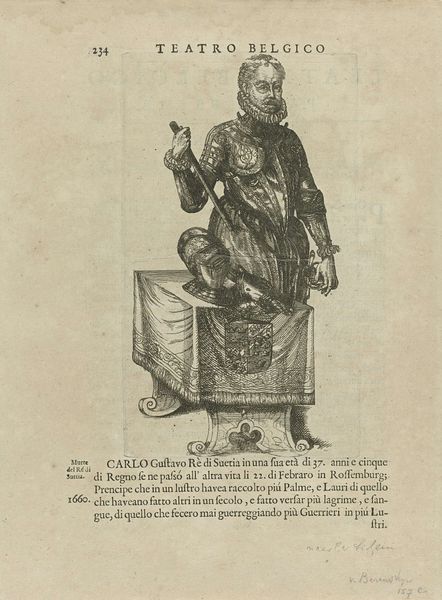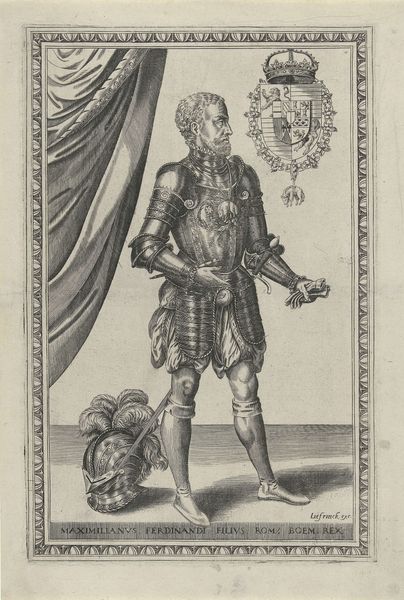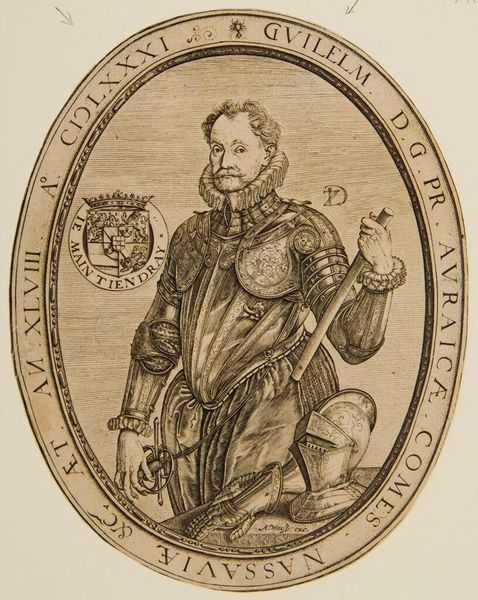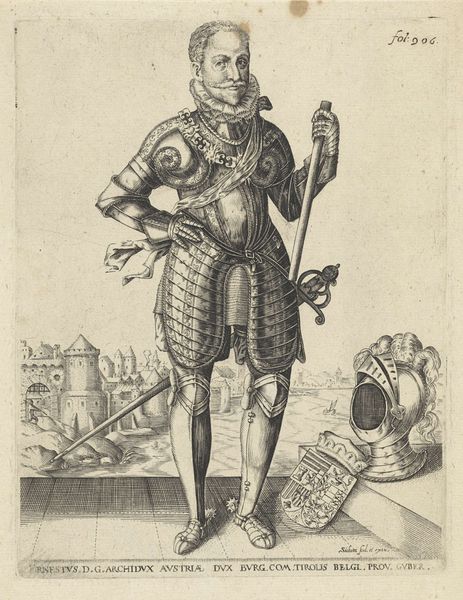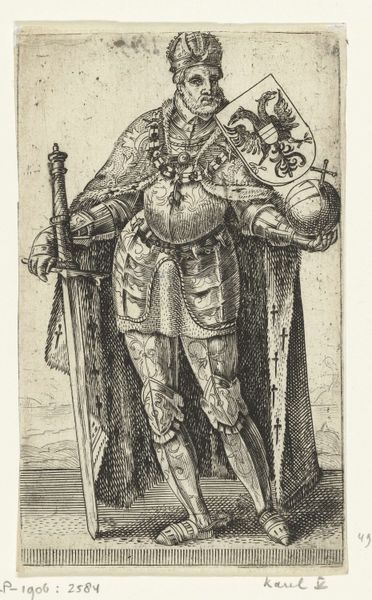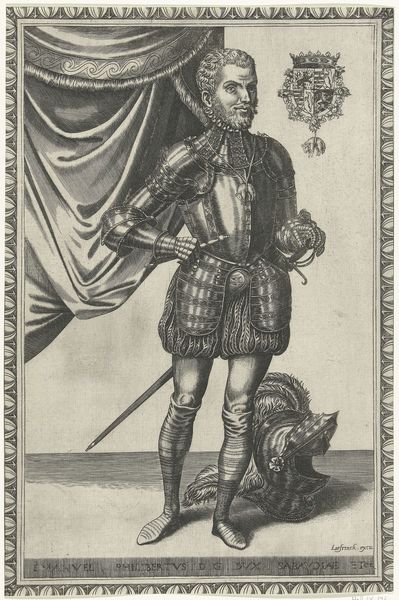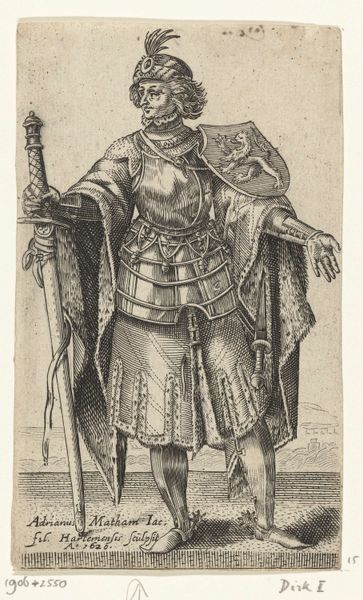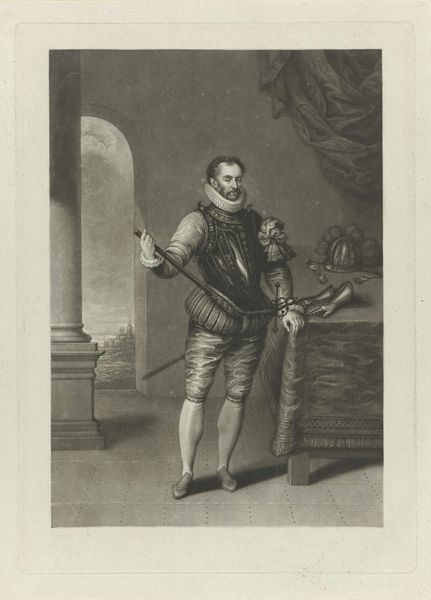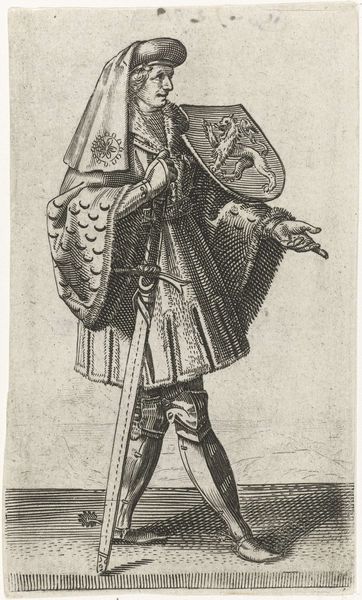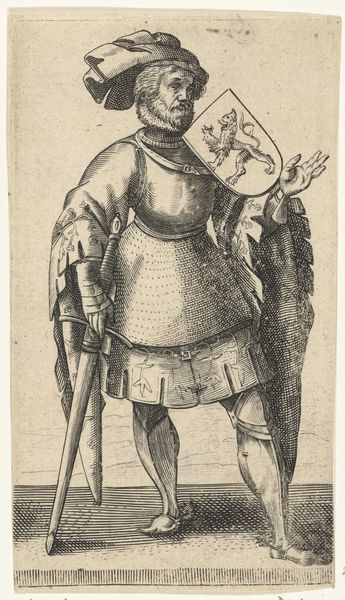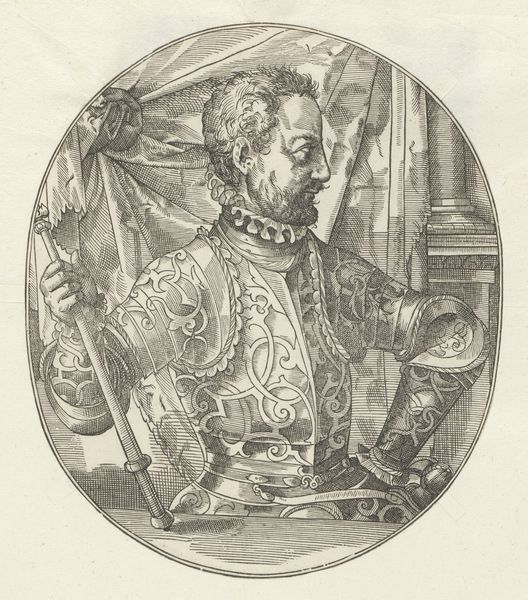
drawing, pencil
#
portrait
#
pencil drawn
#
drawing
#
light pencil work
#
pencil sketch
#
pencil
#
pencil work
#
watercolour illustration
#
history-painting
#
sketchbook art
#
realism
Dimensions: height 206 mm, width 133 mm
Copyright: Rijks Museum: Open Domain
Editor: So, this drawing, "Portret van Willem I, prins van Oranje," by an anonymous artist, from somewhere between 1825 and 1903. It's a pencil drawing, fairly detailed. There's something almost wistful about the way he's depicted, despite all that armor. What catches your eye in this portrait? Curator: The armour itself is powerfully symbolic, isn’t it? Not simply protection, but a statement of power, duty, and perhaps even sacrifice. And the baton – notice how he holds it, not aggressively, but almost thoughtfully. It speaks to the weight of leadership. Do you think it conveys a sense of vulnerability alongside the strength? Editor: I see what you mean. He's got all the trappings of power, but the way he holds the baton does seem to suggest a thoughtfulness or weariness, yes. So, is the image trying to convey more than just a straightforward portrayal of a leader? Curator: Absolutely. Consider the time this was created, the 19th century. This wasn't just a depiction of Willem I, but a conjuring of national identity. A symbol of Dutch independence and resilience against foreign rule. It invokes collective memory. What echoes of the past do *you* feel it brings forth? Editor: Well, knowing a bit more about the historical context, I now notice the figure embodying that sense of Dutch resilience, even more so than when I looked at it initially. Curator: Indeed. And that is the fascinating thing about images - they are so good at carrying a kind of cultural memory and shared emotion, aren't they? Editor: Definitely. It's more than just a picture, it’s an idea made visible. Thanks for clarifying all this.
Comments
No comments
Be the first to comment and join the conversation on the ultimate creative platform.

